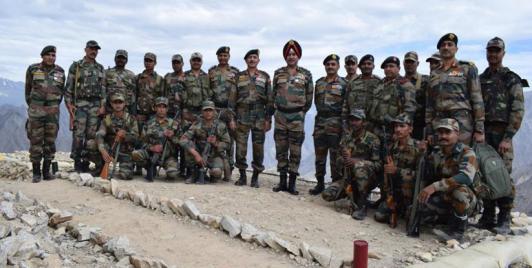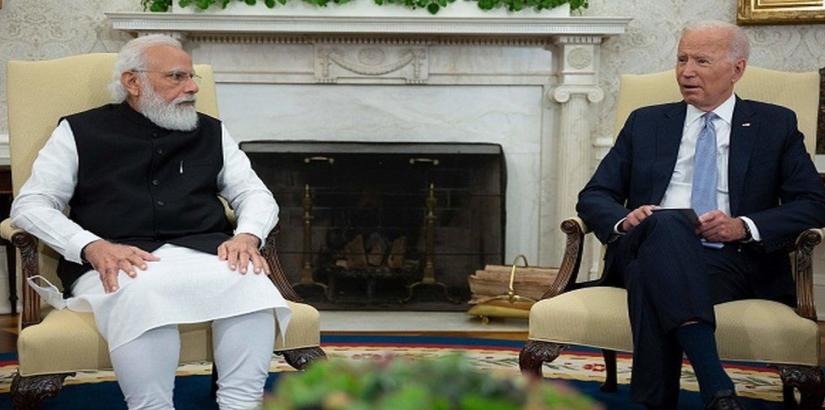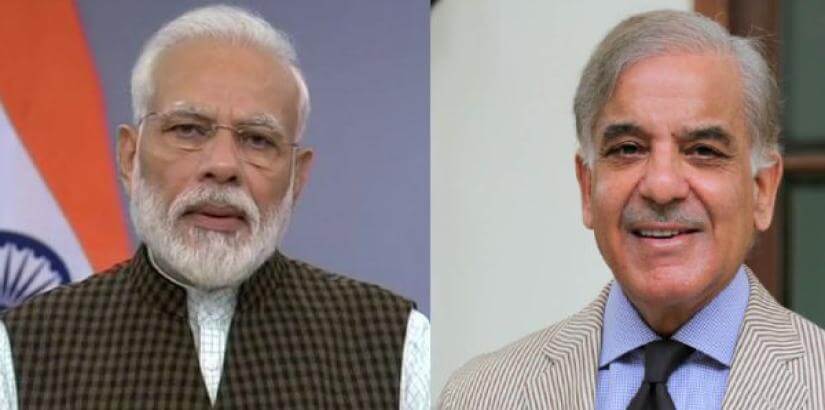Lt Gen P R Kumar (retd)
Every Indian citizen, especially security and China watchers, would be able to rattle out the latest situation along the Line of Actual Control (LAC) in East Ladakh given the plethora of inputs, barring from the government. There are a number of options discussed both by the self-styled pacifists (actually status quo supporters who never want to make a move, and pray and hope that the crisis will resolve itself, irrespective of outcome), the hawks, and the moderates.
The background chatter is also by now well known, provide excuses or show surprise at the action of an adversary, talk of the woeful global economic situation in which we are equally affected and to top it all, the crisis of COVID-19 which is engaging the world. All because of a mindset of how can we challenge the Chinese, will it not lead to a confrontation between two asymmetric adversaries or worse to a two-front entanglement.
We must be very clear that China has violated all the confidence-building measures (CBMs), Border Defense Cooperation Agreement (BDCA), Joint Working Group, Senior Representative level understandings, protocols and mechanisms for border management, including the latest “strategic guidance to the respective militaries to strengthen communication to build mutual understanding and enhance predictability and effectiveness in managing borders” signed by President Xi Jinping and Prime Minister Narendra Modi even before the ink has dried. It is by now clear that military and political level talks and movement on the ground are going on excruciatingly slowly.
China’s big gamble
Immediately after China got a handle on COVID internally (there are inputs of a second coming, which may actually egg them on to create multiple external crisis situations), and while the rest of the world is still battling the virus and its effects in other domains, China (Chinese Communist Party to be more precise) led by Xi is changing the global status quo. From using gunboat diplomacy, border troop aggressive movements and deployments, high seas and border intimidation, wolf diplomacy, economic holdouts/threats like with Australia and conduct of high level troops exercises involving the entire People’s Liberation Army (PLA), building new strategic alliances and friendships a la Iran, China is on the move externally in all domains.
Interestingly the low-key military approach has long been discarded and the entire PLA is galvanized. The multi-service, multi-domain Armed Forces exercise in the South and East China Seas and border areas especially along the LAC with India are of a much larger scale, involve interoperability and being conducted closer than normal to adversarial shores and borders. The PLA Army, Navy, Air Force, Marines, Rocket Forces, Air Defense, non-kinetic hi-tech formations like cyber, space, information, surveillance and reconnaissance (ISR), amphibious, logistics supply chain units are participating, and the much-touted three warfare strategy (public opinion, psychological, and legal warfare) is being applied around his strategic space. At last count one of the security experts spoke of China engaging 27 countries in multi-domain competition leading to a confrontation.
Enough reasons for why has also been analyzed – from showcasing comprehensive national power (CNP) and ascent to global power status by simultaneous confrontationist actions with numerous nations, including demonstrable actions to challenge the US, and teach cocky new India a lesson. The last with the idea to disrupt India’s growth story, slow down its infrastructure development along the northern borders, indicate an unstable India internally where the movement of industries from China is fraught with risk, warn India to lay off Aksai Chin and Gilgit Baltistan, dissuade India not to create trouble in the functioning of Belt and Road Initiative (BRI) especially China–Pakistan Economic Corridor (CPEC) which is existential for China, and to stop India from interfering or dominating the Indian Ocean Region (IOR) and Malacca Straits.
All this with a larger ambition of garnering real estate in multiple areas having strategic sensitivities. All nations and security and China experts are only second-guessing, and China’s the rationale for its actions is frankly still a mystery, which will unfold as time and events roll along. A reasonable thought would be the Chinese Communist Party (CCP) taking advantage of its weakened rivals, and seeing an international power vacuum, while overestimating its own power, reacting to aggression from its adversaries or opportunists and acting out of insecurity about its own status.
Truisms regarding China and India impacting its relationship
*Wars/conflicts need a ‘whole of nation’ approach, since nations fight wars/conflicts and armed forces, are the main instruments to wage it
*There is a considerable asymmetry in CNP between the two nations including the armed forces, especially in fairly newer domains of space, cyber, psychological, niche technologies (nano, hypervelocity, artificial intelligence (AI), robotics, drones).
*However, close our strategic alliances, India and its armed forces must be prepared to act alone to contest the LAC impasse. Assistance in forms of information, equipment, weapon systems, posturing and projecting a threat in China’s other areas of vital interest (Taiwan, South China Sea, and IOR including Malacca Straits) will impact the overall strategy and end game of China.
*Two-front scenario is a real and present danger, and armed forces have to plan and deploy their forces accordingly.
*Geography and terrain impose time and quantum restraint on strategic movement of forces from one sector to another.
*Both sides will require tremendous quantum of infrastructure for troops to stay in the winter.
*Logistics and supply chain management is vital and will dictate the level of operations/conflict since the main bases of supply for both countries is far away. The nation that manages it better will carry the day.
Chinese game plan and Indian options
The aim here is to focus on the resolution of the LAC impasse and leave out the strategy, esoteric, and higher conduct of war. China has changed the status quo ante of military and paramilitary forces presence as of April 2020 in East Ladakh in at least four locations. While India has conveyed its intention of not accepting anything less than withdrawal to April 20 positions, the Chinese are playing hardball. Talks and corresponding movement of troops from the standoff locations are going slow, with total lack of trust, requiring minute verification and detailing on ground and talks. My assessment is that China is playing for time and at the ground level will follow the following methodology. Agree and withdraw at some places on a quid pro quo basis (not necessarily to April 20 positions, since it has deployed forward in all cases); stay firm but continue talks in some locations, which are of strategic significance (Pangong Tso); pull back to status quo positions of April 20 in one/two locations. In any case, the operational status quo has been disrupted in terms of force density (Army and Air Force on both sides) by China mirrored by India.
Winter is approaching
India has signaled two aspects firmly; one, India’s intent of not backing down till status quo of April 20 is achieved; two, and so, its armed forces including the additional formations (be it infantry, artillery, armor, mechanized, Air Defense, Army aviation, and Indian Air Force) are going to buckle down for the winter. The very famous saying from the blockbuster serial Game of Thrones that ‘winter is coming’ is very apt. It will require a tremendous logistical and infrastructural effort but our troops have done such maneuvers before and will willingly do so again. Logistics and infrastructure preparation are already on at full swing. History has time and again proved that our armed forces are outstanding at crisis management, make miracles happen, and fight and endure with ‘what we have’.
What is the strategic intent of the Chinese; have they already achieved it by changing the tactical status quo and manoeuver as already discussed. Will they withdraw the majority of their troops closer to winter setting in, or also continue to stay the winter? If they stay the signature of logistic supply chains cannot be hidden and all our intelligence agencies must be focused on it. Logic dictates (logic can go wrong in crisis especially involving adversary and reading an adversary’s mind) that China would not want a conflict, as it will be very costly in terms of human casualties and further sharpen world outrage and adverse disposition towards China. This is certainly not a foolproof method of arriving as a global power, annoying the world, and embroiled in a multi-domain confrontation with a large part of the world especially the developed world and most of Asia.
Coming back to the LAC, logistically the Chinese can master it (if we can, so can he, is a prudent assumption). The question is can the Chinese troops weather the winter, I presume so, but they are largely conscripted, not used to high altitude sustenance over long periods, let alone fighting, and inexperienced in combat. Our logistics supply chains while long no doubt, but his main rear is mainland China and even longer, and most importantly the Indian Army has been doing winter stocking in ever-increasing quantities for decades.
For the Chinese, to stay the winter may defeat its very purpose and send wrong strategic and ambiguous signals to Chinese people and internationally, that China is stuck in a quagmire of its own making. China, I believe, will try to brazen it out in talks politically, diplomatically, and militarily and persuade India to hastily (much before winter sets in) accept a compromise which will then be projected as a win-win situation for both the countries and showcase its magnanimity and strength to the Chinese people and the World. If we do reach an agreement, I hope it is because China has accepted our firm stance of returning to the April 20 status quo. Then all his troops other than those who were operating there before April 20 should withdraw in a phased manner and the situation would normalize in time. The Chinese by now would be very clear that Indian troops are prepared to spend winter in East Ladakh.
Opportunities will come its way for the Indian armed forces. The army must continue aggressive patrolling in East Ladakh and challenged areas, always posing a threat to the Chinese deployed forward. With synergized multi-service operations and invaluable support from IAF, we should in phases isolate and evict, or force Chinese troops to withdraw to status quo locations; or even look for quid pro quo options of occupying sensitive territory across the LAC, employing the integrated battle groups (IBGs). India must be more than ready to trade fire to achieve its mission of eviction.
India and the Indian Army know that next summer physical eviction of Chinese will get even more challenging. It will have to be hard political and diplomatic maneuvering (again number of options like review position on Tibet, Hong Kong, Taiwan) which is not going to be easy given the disadvantageous ground situation. The Chinese, one would say have boxed themselves into a corner. They did not want a conflict and will avoid one at all costs. A stalemate would definitely constitute a defeat in strategic and international parlance for China, while for India it will further showcase the emergence of a resurgent, confident new India. For this to become a reality India has to buckle down, show resolve and endurance, weather the winter and Chinese storm, and most importantly show tremendous faith in its armed forces to deliver.
It is going to be a very interesting winter to come, as it is going to be a defining moment in our history having far greater implications than tactical, if we come out of it achieving our national and military objective, a stronger, vibrant new India will be ready to take off in the global platform. But while it is a great challenge for the nation and our armed forces it is doable with planning, resolve, and will, as failing is not an option and will set us back strategically and we must be ready for many more similar summers, this time from both China and Pakistan.
So, prevail we must. Remember, even with requisite comprehensive national power, deterrence power may not be forthcoming automatically. For this, we have to build a deterrence reputation where our adversaries know that we will use our deterrence capabilities when our national interests are at stake. It is time to enhance our deterrence reputation. South Asia Monitor







